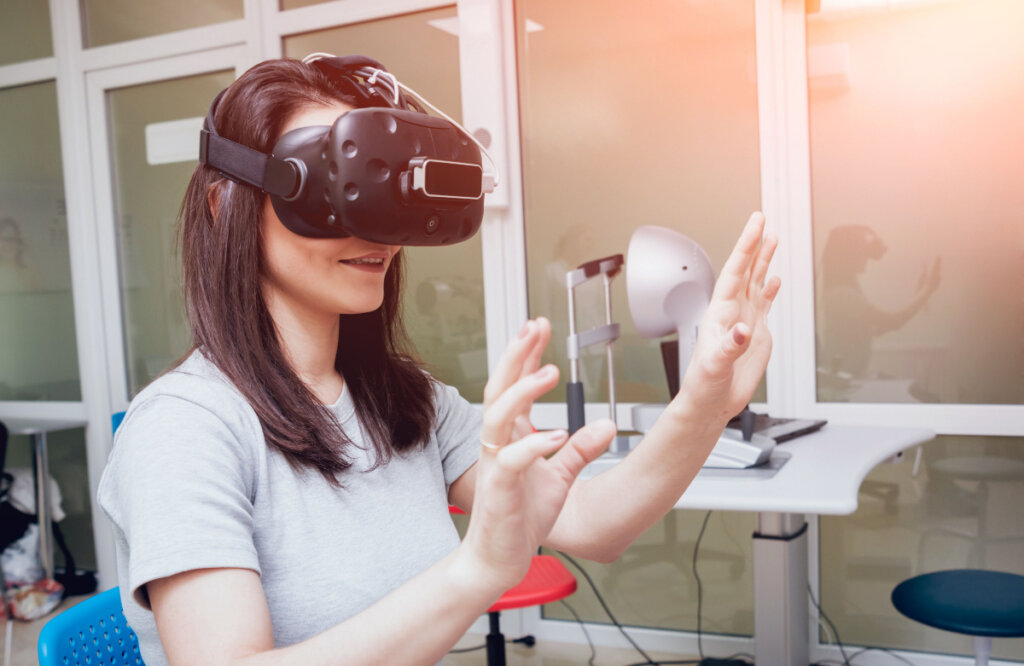AVATAR Therapy for the Treatment of Anorexia Nervosa


Written and verified by the psychologist Gorka Jiménez Pajares
AVATAR therapy is one clear example of technological progress in the field of psychotherapy. Society tends to transform in conjunction with scientific progress, resulting in the emergence of new forms of treatment. One of the great successes of the 21st century has been the application of virtual reality to the field of psychotherapy in general, and more specifically to anorexia nervosa. In this article, we’re going to examine the first (and only) published research about AVATAR therapy.
This therapy was originally designed for the treatment of auditory hallucinations in psychosis. However, it’s been adapted for the treatment of anorexia nervosa with one goal: externalization. More specifically, it’s about helping the patient to separate their identity (Self) from the fact of suffering from anorexia.
We’ll explain it with one specific case. Andrea suffers from anorexia nervosa. She calls herself anorexic. In fact, for her, anorexia is simply another part of her identity. One of the goals of the AVATAR treatment is externalization. In other words, to make Andrea see that she’s much more than just anorexia.
“Externalization is the separation of a person’s identity from the problem they are experiencing.”
-Alistair Thompson-

An approach to the concept of anorexia
In the eleventh edition of the World Health Organization publication, International Classification of Diseases ( ICD-11 ), they define anorexia nervosa as a clinical entity characterized by low weight (body mass index less than 18.5) in addition to behaviors with the objective of avoiding weight gain. These can be:
- Limitation of intake. For example, prolonged fasting or purging (self-induced vomiting, laxatives, etc.)
- Increase in energy expenditure. For instance, through strenuous exercise.
Added to this is the devaluation of the sufferer’s perception of their image. This devaluation is so intense that it constitutes one of the most nuclear features of anorexia nervosa. Indeed, both the weight deficit and the devaluation of the body are two clearly defined aspects of the disorder.
Excessive concern about their own shape and weight is a process that ends up manifesting itself in the dialogue with which the patient talks to themselves. Alistair Thompson calls it ‘the eating disorder voice’. It’s a negative emotional dialogue that’s intrusive to the sufferer.
“It is common for patients to present sadness, irritability, social isolation, and decreased libido.”
-Amparo Belloch-
AVATAR therapy distances the sufferer from the voice of anorexia
Psychologist Alistair Thompson, from King’s College London (belonging to the University of London), has recently published an adaptation of the original AVATAR therapy program for psychosis in anorexia nervosa (AN). As we mentioned earlier, the objective of this therapy is to ensure that patients with anorexia are able to separate their own entity from the disorder.
AVATAR therapy uses a ‘visual entity’, made using virtual reality, to which an artificial voice is applied. The artificial voice is that of the therapist. However, it’s adapted to how the patient perceives the voice in their own mind. It’s also as close as possible in terms of tone and rhythm.
It’s processed by a state-of-the-art virtual reality software system. This results in AVATAR: a digital representation.
The voice of anorexia nervosa
Undoubtedly, AVATAR is an extraordinary adaptation. Its recent implementation in treating anorexia is due to the fact that it was previously successful in treating the voices that occur in people with psychosis. Therefore, researchers decided to try AVATAR to intervene in the internal language with which patients with anorexia describe themselves.
“Voice eating disorder has been linked to negative eating attitudes and compensatory behaviors, such as purging.“
-Alistair Thompson-

Applying AVATAR therapy in anorexia
The patients who followed this virtual modality scored it a seven (on a scale from zero to ten). Evidently, they were remarkably satisfied with the results. Moreover, they only required six AVATAR therapy sessions to obtain results.
One of the effects of the internal voice in anorexia nervosa (“I’m fat”, My body shape is a world away from what I want”, “I should eat less”, etc.) is anxiety. This symptom was one of those whose reduction was more notable with AVATAR treatment.
The frequency with which the patients referred to themselves in negative terms and in relation to anorexia also decreased. In addition, regarding adverse effects, the results indicated an absence of adverse experiences.
Finally, the main conclusion of this research is that AVATAR therapy, when used to intervene in the internal voice in the context of anorexia nervosa, is a good treatment. This is thanks to its efficacy and safety.
All cited sources were thoroughly reviewed by our team to ensure their quality, reliability, currency, and validity. The bibliography of this article was considered reliable and of academic or scientific accuracy.
-
Thompson, A. (2022). AVATAR therapy adapted for anorexia nervosa: testing feasibility, safety and acceptability using a single case experimental design (Doctoral dissertation, King’s College London).
-
Llorens Hervas, M. (2021). Programa de intervención cognitivo-conductual junto con terapia avatar aplicada a las alucionaciones auditivas en personas con transtorno mental grave.
-
CIE-11. (2021). https://icd.who.int/es
-
Belloch, A. (2023). Manual De Psicopatologia. Vol. Ii (2.a ed.). MCGRAW HILL EDDUCATION.
This text is provided for informational purposes only and does not replace consultation with a professional. If in doubt, consult your specialist.








